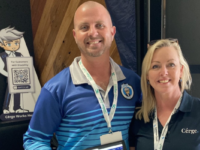Australian small businesses are in the midst of an unprecedented skills shortage. In February 2020, mere weeks before the outbreak of COVID-19 in Australia, the proportion of businesses reporting at least one vacancy was 11 per cent. By November 2022, this had increased to 27.7 per cent.
And, while businesses across a range of industries are still reporting significant recruitment concerns, the unemployment rate for Australians living with disability has not changed in over 28 years. In Australia, only 53.4 per cent of people with disability of working age are actively employed. That’s an untapped talent pool of more than two million Aussies, many of whom are struggling to find work due to inaccessible workplaces, unconscious bias and fear of rejection.
There is an obvious opportunity here to solve the problem of a lack of skilled workers for business, and the shortage of available roles for people living with a disability.
You might be wondering how a small-business owner like yourself can begin to access this resource of talented and enthusiastic job seekers. Developing an inclusive recruitment strategy can seem overwhelming to the uninitiated. I get it.
On 31 August 2014, I broke my C2, C5, T3, T4 & T5 vertebrae as the result of a fall. The injury caused irreparable spinal cord damage and classified me a ‘C-5’ quadriplegic.
I wasn’t aware of the barriers to employment until I acquired my disability. And since, one of the biggest misconceptions of my peers and colleagues has been around what I can do, or rather, what I can’t do.
The thing that surprised my employers most about my work post-injury wasn’t my talents, it was the impact that hiring someone with disability could have on the broader workplace. According to various studies, disability-inclusive organisations:
- Are nine times more likely to innovate; 10 times more likely to be ‘highly effective’ and five times more likely to give excellent customer service.
- Enjoy a 34 per cent increase in customer loyalty, a 61 per cent increase in workplace morale, and a 49 per cent increase in the ability to fill skills gaps.
These benefits are amplified for small businesses that often rely on their team and culture to stand out from their competitors and depend on strong customer relationships for success.
Creating a disability-inclusive workplace doesn’t need to be scary, and the best news is that even seemingly small changes to processes and policies can make a big difference. An inclusive workplace might include things like:
- Making sure all communications are accessible and easy to read, including adding alt text, subtitles, clear font and contrasting colours.
- Not assuming someone’s access needs based on their appearance (many disabilities are non-visible.
- Making workplaces accessible for people with all kinds of disabilities, including those who use mobility aids, are neurodivergent, and those who are blind or deaf.
- Allowing flexible hours, part-time work and the option to work from home.
- Using inclusive language to help people feel understood, valued, respected and appreciated.
Increased awareness and uptake of inclusive recruitment strategies at all levels of business in Australia will play a part in lowering the statistic that has not shifted in over 28 years. Enhancing the involvement of individuals with disabilities in our communities will elevate diverse perspectives and address misconceptions head-on.
If there’s only one thing you take away from this when it comes to recruitment, try focusing on what people can do, rather than what they can’t.











